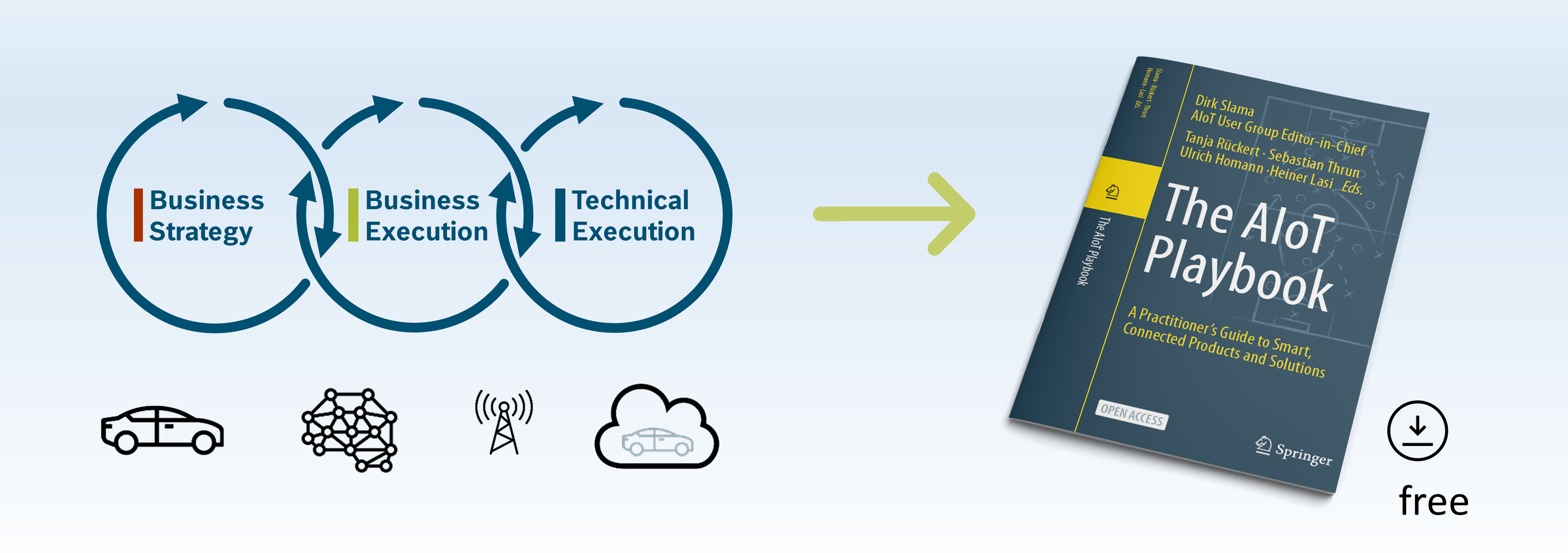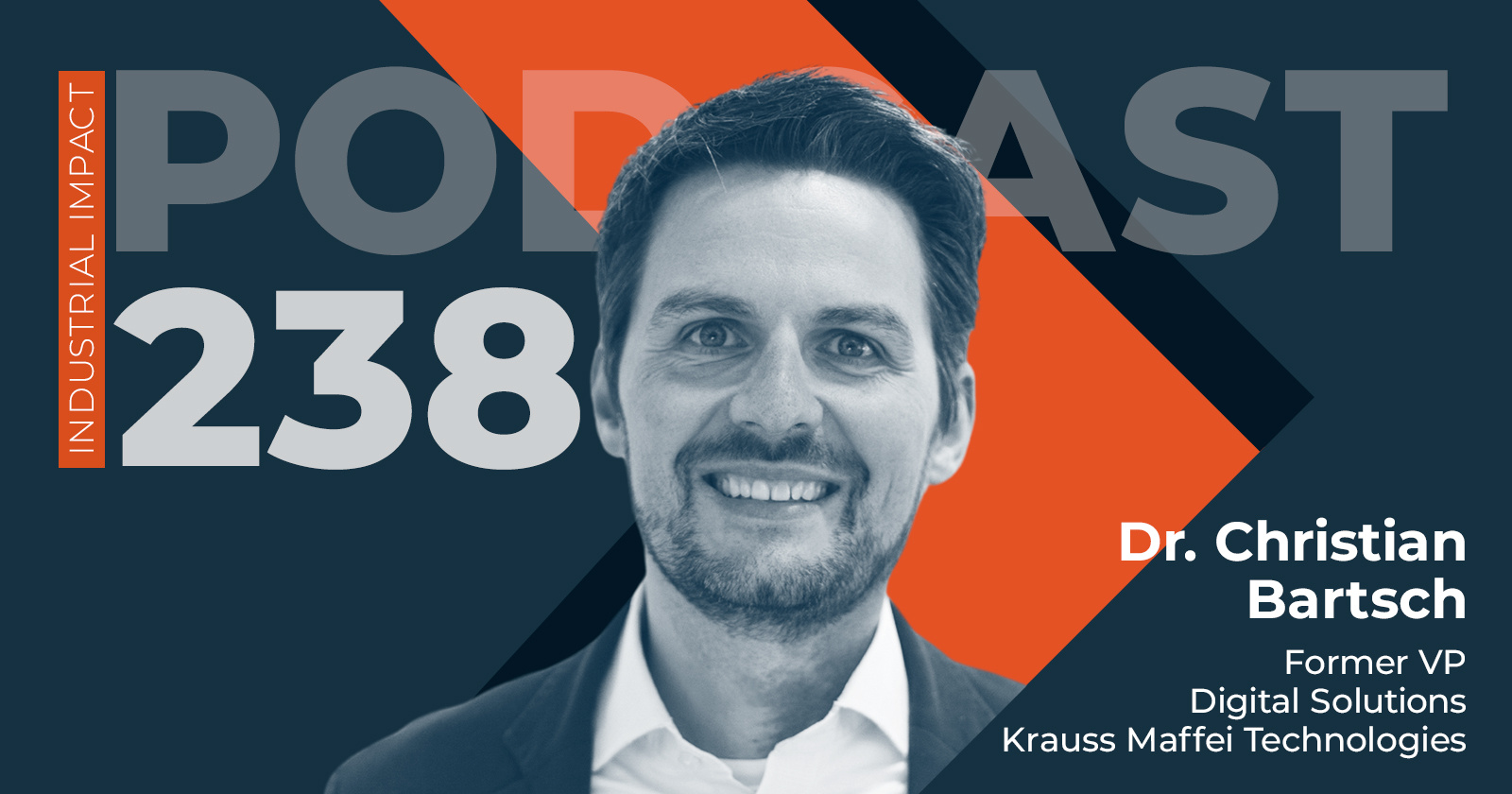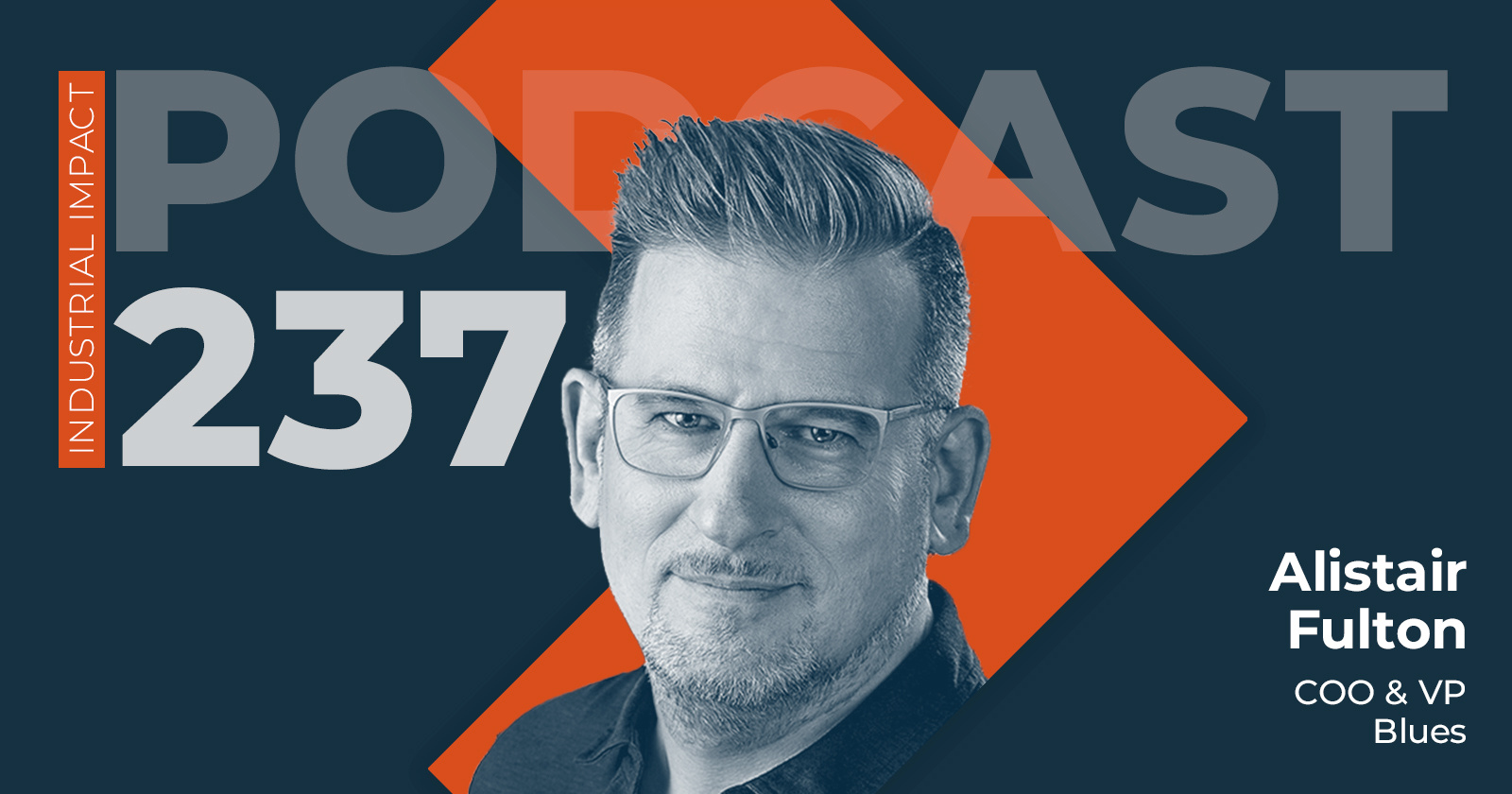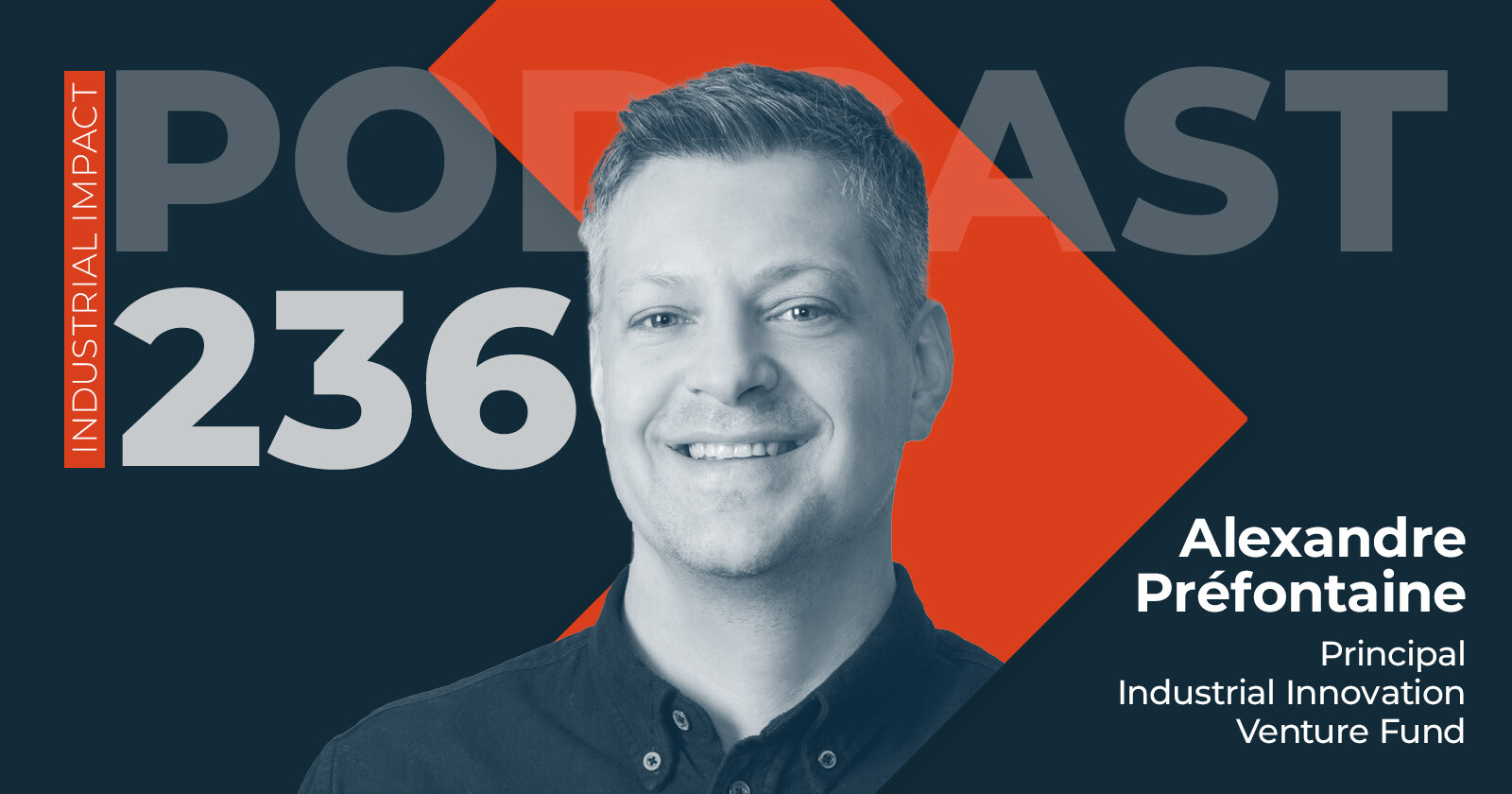Dirk Slama, Bosch
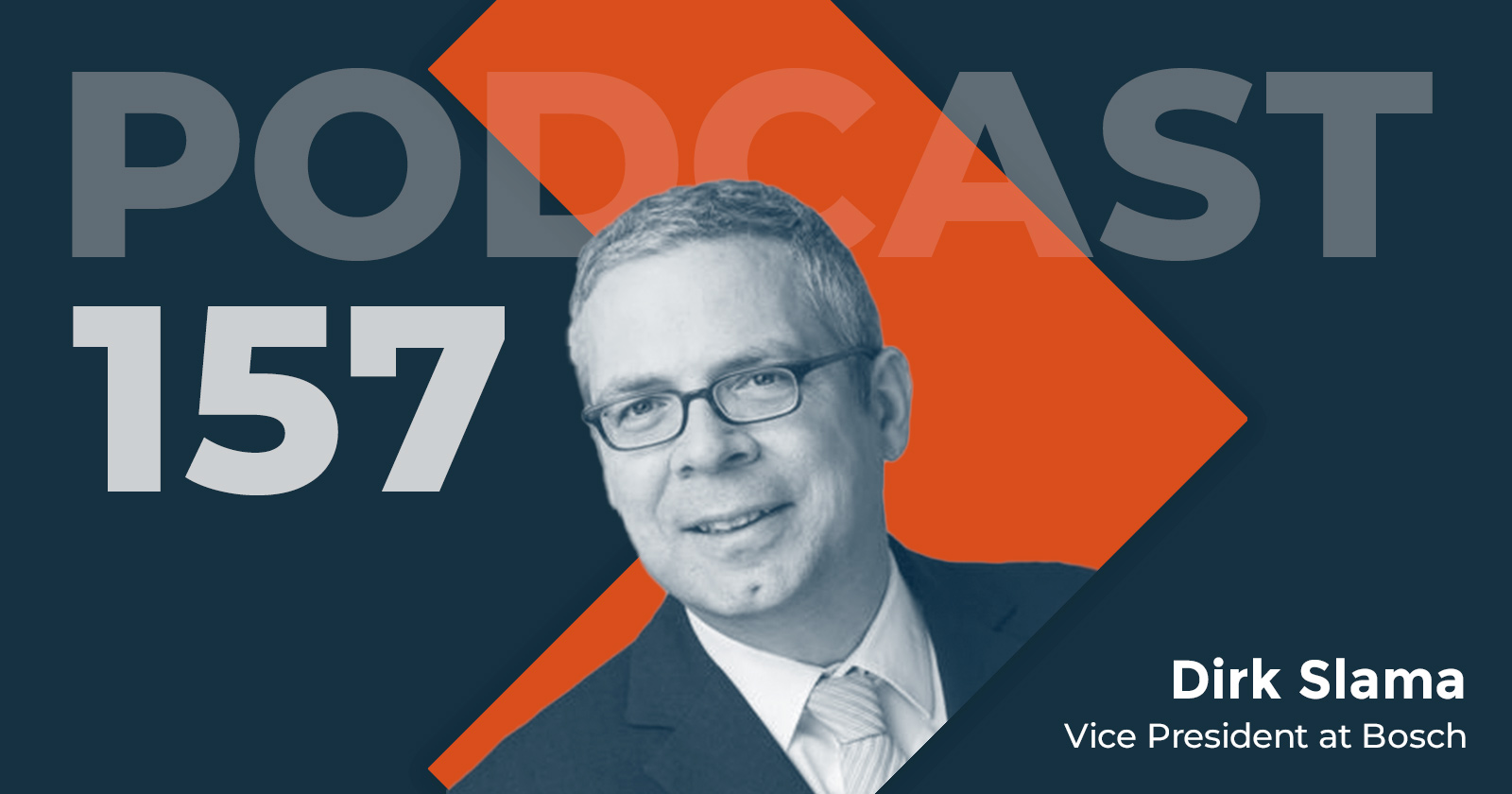
TRANSCRIPT
Ken: This is Ken Forster, Executive Director of Momenta. Welcome to our Digital Thread podcast produced by, for, and about digital industry leaders. In this series of conversations, we capture insights from the best and brightest minds in digital industry. They're executives, entrepreneurs, advisors, and other thought leaders. What they have in common is like our team at Momenta. They are deep industry operators. We hope you find these podcasts informative, and as always, we welcome your comments and suggestions. Good day, and welcome to Episode 157 of our Momenta Digital Thread Podcast Series. Today, I'm pleased to host Dirk Slama, Vice President of Co-Innovation and IT/ IoT alliances at Robert Bosch and Conference Chair of the Bosch Connected World. Dirk has 25 years of experience in the industry. He is the author of four successful books and holds a Ph.D. in Information Systems, an MBA, and a diploma in Computer Science. Dirk, welcome to our Digital Thread podcast.
[00:01:11]
Dirk: Ken, thanks for having me.
[00:01:12]
Ken: And it's long overdue, as I like to say in many of these podcasts. You and I have had a chance to work together over, I think, years. But at least in-depth, in several months on the AIoT user group, of which we'll talk about in a few minutes. I always like to start these podcasts off, though with more personal interest, if you will. And that is around your digital threads. What would you consider to be your digital thread? In other words, the one or more thematic threads that define your digital industry journey.
[00:01:44]
Dirk: I think it all started for me in distributed systems design and integration of heterogeneous applications. I spent about 15 years doing this relatively large project in banking and insurance, and factoring, and so on. And then, about ten years ago, I was working for a company in this business in Berlin that Bosch acquired. And this is when- I would say this digital thread was extended to include the world of physical assets, which we also have many and a certain level of homogeneity there. At that time, Bosch's strategy, in terms of digital transformation, was very much defined around the Internet of Things. In the early days, when we were looking for IoT on Google, you would find exciting things like the International Oceanic Travel Organization, Irons of Tartarus, or something like this. Yeah, but not much about the IoT. Back in the day, this was still more about telematics, M2M, and so on. And then IoT became bigger and bigger. I would say that this, on the Bosch side, was the digital thread for the last couple of years- how can we connect physical products? How can we build digital services based on this new connectivity? And only more recently, we also started to look at how we can add AI to the equation. Still, I would say connecting physical assets using IoT was the digital thread, the recurrent theme of the last ten years.
[00:03:29]
Ken: Interestingly, I remember somebody telling me- probably about a decade ago, that M-2-M, as it was just starting to be called, was going to be the killer use case for IoT, was remote asset management. Having lived through the last 18 months of COVID has reinforced the value of that business case because you couldn't get people out to your asset. You indeed were ahead of your time, as was the gentleman who shared with me that same thought at the time. Since you mentioned the integration of AI and IoT, thus AIoT. Let me start with a broad question. What does AIoT mean to you?
[00:04:07]
Dirk: Well, for me, this is where two worlds are coming together. ONE, the world of connected physical assets, products, and equipment on the one side TWO and then the application of AI.
That is interesting, because IoT per say, is a distributed architecture. You have edge and cloud edge, depending on whom you're talking t. If you look at it from a telecommunications point of view, maybe somewhere deployed at the crossing of sectors, but regardless, it's a distributed architecture. And, of course, you can deploy AI anywhere along with this architecture.
I like to look at this in terms of what we call asset intelligence, meaning AI deployed at or close to the edge, helping to make an individual asset more intelligent, or even more autonomous, versus what we are calling swarm intelligence or feed intelligence, which is more intelligence in the backend, in the cloud, or sometimes still on-prem where you apply AI to data that you gather from an entire fleet of assets, products in the field. The breakout around all of this AIoT is an excellent word to describe this.
[00:05:24]
Ken: I would agree we have been parallel around the same time you guys are doing this work. Of course, we named our most recent venture capital fund, the AIoT Ecosystem Fund, really looking at that same integration.
We like to think of the world in three layers, at least from an industrial IoT perspective. You have to connect, you have to collect the data from that connection, and then you have to correct, i.e., optimize that data. We always think of the world as an IoT stack as those three layers that connect, collect, and correct. So naturally, AIoT is an excellent term to bring all that together.
You've been in leadership roles at Bosch, both across their software innovations group and now at the overall Bosch group. Can you talk a bit about this transformation for Bosch? And how it leads us up to AIoT?
[00:06:14]
Dirk: As I said early on, we've been doing IoT for quite some time and with some compelling use cases.
About ten years ago, when talking to someone about IoT, people assumed AI was somehow within IoT. Everybody talking about IoT was also talking about predictors, preventive, prescriptive, what have your kind of maintenance or autonomous vehicles and so on. But in reality, I would say most of the core IoT use cases were more in the direction of what you just described, more in the direction of- conditioning, monitoring, and remote management. On the other hand, I think it's fair to say that the emergence of- for example, Google's AlphaGo, and so on- back in 2016. AI then became more and more critical. Maybe it's fair to say that hyper scalars- big social network companies started picking it up first, but it also became more and more critical in the industry. It was a little bit done in isolation. It's fair to say that we had the IoT people, and if you talk to them about AI, they were like, 'Yeah, sure, we'll somehow slip it on. And if you talked to the AI people and asked them, 'Well, great. Now we have all these deep algorithms and so'. But how do you get the sensors into this? How do you roll this out in a scalable, reliable way? They're always like, 'Okay, fair enough. This has to be done. But our core is more deep AI algorithms, and it became apparent for us that this needs to grow together to work. And this is really how this AIoT journey started for us. And that is how we gave this a name and started bringing people to work together to develop a holistic view of AIoT.
[00:08:09]
Ken: Let's drill down on that a bit. Under your leadership, Bosch helped initiate the AIoT user group late last year, a global network of AI and IoT industry experts and practitioners. What was the inspiration for this effort? And what are your key goals?
[00:08:25]
Dirk: This whole thing started at the Bosch Connected World Conference in February last year. This is our annual conference, where we present our digital efforts progress together with our partner ecosystem. In the beginning, IoT was very much at the center of this- hence the name Bosch Connected World. As AI became more and more important, we realized that we needed to have a way to integrate this. We asked ourselves if we wanted to do this on our own – or in terms of open collaboration? We decided on the latter as this is a very complex topic. Doing an open collaboration keeps you honest, and you get direct feedback from other companies, the perspectives of startups, and other industrial companies. This was the reason why we set up an AIoT user group focusing on practitioners in this area. Not as an industry alliance that tends to cater more to suppliers. As a user group with a focus on practitioners- looking for good use cases that combine AI and IoT, which help us validate this and then utilize this also from the Bosch point of view is guidance in our adoption of AIoT.
[00:10:07]
Ken: On the subject of open collaboration, I must say in the time that Momenta's been involved both on the editorial board, which we'll talk about in a minute- but also running at least one of the regional user groups, I must say I've been pretty impressed with the openness and if you will, inclusion that you guys have operated under even though there's Bosch in the name, you guys have been very open to us, including your peer companies. As you say, startups, venture capital, etc., it truly feels like an ecosystem in that regard. As I mentioned, we're pleased to be part of your editorial advisory board. Can you speak to some of the critical wins on this perspective and then the upcoming events for this team?
[00:10:48]
Dirk: Sure. There are a number of things. The first one is the announcement of the AIoT playbook that will be available on the date of publication of this- September 29. This is year-long work where we put together different perspectives from experts on the business side, on the IP side, on the hopper side, the AI side, of course, and created a label that is, I would say, very actionable that helps building bridges between these different perspectives. And that is then also the foundation for traditional work that we're doing in terms of training, for example- in terms of verticals, and so on. So that was pretty important. And then, of course, I think we will talk about this later, the other points that I just mentioned.
[00:11:41]
Ken: You mentioned that you would also be releasing the AIoT playbook on the publish date of this podcast. Momenta is proud to have been a contributor to that. Tell me just who is the book targeted for, and what can they expect to glean from it? And then finally, how can somebody get a copy of this?
[00:12:00]
Dirk: Sure. We've seen that AIoT is a powerful enabling technology, but enabling technology does not do a business. This is why we have- as I've said, we need three perspectives on the table. One is a business strategy, one is business execution, and the third is technical execution.
The business strategy side of things is looking at the foundations of this. What are the key roles that you have in this industry? For example, the digital OEM, which is the traditional OEM with its physical products, is becoming more and more focused on digital, physical types of solutions. Or is it the digital equipment operator, so the operator who doesn't necessarily manufacture the assets is operating them. Or even hybrids, let's say like a Tesla, that's an OEM of Tesla cars, but also the operator of the supercharger network. And then the type of business strategies you can derive from this and how you scale that.
In the middle, we have what we're calling business execution. This is very much about taking the business strategy, applying it to a portfolio of opportunities, identifying the opportunities.
Then starting with the execution of the unique opportunities in terms of your product or solution, design-sourcing plays a significant role here, not to forget the legal aspects. AIoT is touching on many things. Last but not least, co-creation.
The third pillar, the technical execution, enables an organization to develop these AIoT enabled smart, connected products and solutions at different paces. Because obviously, you have the continuous improvement in the clouds, and then we have the functional safety-related aspects. You have a hopper that plays by different rules, and so how do you bring all of these together in the most possible, agile way without forgetting the typical limitations and boundary conditions for implementing this?
Through all of this, what is the impact of adding IoT and AI? What is the impact of AI on business strategy? What's the impact of AI on business execution, sourcing, and the legal side of things? And what's the impact of AI on technical execution? This is what we're covering at the AIoT table. In terms of the audience- although this is relatively broad, we have found that it's good to have your leadership team together with your product management, your solution architects, and your tech leadership. This should be used as a foundation to develop a common language because that's one of the most important things when you implement a product or solution, vision. People on these levels need to develop a common language to work together effectively. I would say everybody in the group, as mentioned earlier, should be very interested in what we're doing here.
[00:15:19]
Ken: I'd agree. Final question, if somebody wanted to get a copy of that, how would they obtain it?
[00:15:25]
Dirk: Very easy. A-I-O-T playbook.org. It's all open-source. We have an online version with an excellent way of visually navigating between the different topics. The book can also be downloaded, and it is entirely free. So aiotplaybook.org.
[00:15:51]
Ken: Excellent, indeed an ecosystem. One of the chapters we participated in was co-creation and how all these pieces and actors are coming together. Can you say a bit more about what co-creation means to you in the AIoT context?
[00:16:09]
Dirk: That was a fascinating interview. In this interview, we brought together- of course, your perspective, which comes more from the startup point of view, the incubation point of view. We also had Jean-Louis Stasi from Schneider Electric and Dennis Boecker from Bosch. We're both responsible for innovation at the two companies. And then Heiner Last, who's looking at innovation in particular around data spaces. If you take these different perspectives together, it becomes pretty clear that a lot of the innovation in the space is driven at the moment by startups. And the interesting question then is what's the intersection between the startups and the larger companies in the space working together, be it for the development of domain-specific AI algorithms, be it for the creation of data spaces that you need as the foundation for AIoT across the company boundaries, and so on. What was interesting was really to see how these different types of companies can work together, starting with a more traditional customer-supplier or strategic relationship. Ken, you made then point about- when does it make sense for startups to even think about strategic relationships and their maturity up to, of course, like really strategic relationships that manifest themselves in terms of equity investments. It is important to manage to get the innovation from the startups working together with the global scale and the access to the domain know-how and partly, the physical outlets that the large companies provide. And that's why I think co-creation space is significant.
[00:18:05]
Ken: And I agree, as I think we kind of co-formed as the team- really looked at those four key actors you mentioned. I think what we call the incubators, the innovators, the incumbents, and the implementers. And if the audience wants to know any more than that, I suggest they go to the AIoT playbook site. As if that is not enough- because you have been a very busy person, you guys are getting ready to announce, in fact- and I think it'll be announced in the same day, a new AIoT course in partnership with Udacity. Tell us a bit more about this.
[00:18:38]
Dirk: Yeah. This is an exciting partnership as well. Udacity is one of the leading online universities. They started with a solid focus on AI, and we've been fortunate to have a chance to work together with Sebastian Thrun. He's a very interesting and knowledgeable person. His team won the DARPA Grand Challenge 15 years ago- the first series autonomous vehicle covering an outdoor course in a desert. He moved on to Google and then to Udacity. Working with him, we realized that for industrial players, particularly the combination of AI, with these distributed edge and cloud architectures, plays a key role. This is why we decided to do this AIoT foundations course now together.
Again, it's open, so available at no cost on the Udacity website. It has almost all of the materials developed for the AIoT playbook in a very interactive way. If you go through the course, you have a lot of audio and video material, and you have little quizzes, and so on. Also, in terms of the learning journey, it's very interesting to convert this to something that makes this knowledge very easily accessible.
[00:20:01]
Ken: You've also recently launched several vertical user groups. Can you say a bit about the key themes you are covering with these and how people can find out more about the user group and these verticals?
[00:20:13]
Dirk: Sure. One area where we see AIoT playing an enormous relevance is in the area of building and construction. In this space, there's this concept called BIM, or building information model, which is the proper foundation for planning, building, and operating buildings. We see that AIoT comes in at least two areas here. One is the creation and validation of the BIM model. You can use AI and IoT-enabled tools that use different kinds of sensors, cameras, and radars to track the progress of the building at the construction site and then feed the collected information back to the BIM model. It's effectively a digital twin enabled by AIoT. Another use case, of course, is to utilize this data- again, using AI to do assessments. We have one interesting case study where some of our colleagues have developed a drone-based site inspection tool. Drones take a scan of buildings and use connectivity to the back end. Then the use of AI- to identify any potential problems with these facades. I think that's a compelling use case, and it covers the entire building lifecycle from construction to operations.
We see many more use cases- from structural integrity to monitoring of the buildings, in particular for commercial buildings. I think now in AI- I don't want to say post-COVID time because it's not over, so in a new reality type of situation that we are in at the moment; how to manage the operations of buildings, the flow of people through buildings, how to avoid or minimize potentially dangerous contacts, and so on. These are all interesting use cases.
Another use case that we have just started looking at is in mobility. Again, mobility, of course, is broader. What we're seeing are new transportation systems like smart shuttles. These are not autonomous shuttles, but shuttles combine public transportation with taxi types of services where you can order the shuttle but will not be the only passenger. This service is reliant on connectivity to get the status of the entire shuttle fleet through AI. We call this swarm intelligence; to learn about where your customers want to be picked up and where they want to go, and how you can then map your available fleet to them.
Within mobility, there are other areas like software-defined vehicles, which are very interesting and close to AIoT. In terms of many of the concepts we have developed, I would argue that maybe the automotive industry has not adopted the term AIoT. Many of the concepts that we're finding, software-defined vehicle, AI-defined vehicle, connected vehicle, and so on, are also nicely described by our AIoT playbook and the training.
We're currently also launching an AIoT lab in Germany, and we are presently discussing setting this up in Singapore, Shanghai, and Chicago. In addition to the more conceptual guidance, we see that people also want to see hands-on proof of how AI, IoT, and digital twin can be brought together in all the different verticals that I just mentioned.
The first system that we have built out is in manufacturing. This is another exciting area where we have implemented an AIoT enabled system to analyze pneumatic systems, using sound pattern analysis to identify leakages in pneumatic systems. I think that this is nicely rounding out the activities in the user profile.
[00:24:39]
Ken: Fully agreed. The AIoT playbook, the AIoT course, the AIoT verticals, and now AIoT labs are all going with it. You have been a very busy person and Bosch as well. If somebody wants to join this great organization regarding the user group, how should they find out about you guys?
[00:24:58]
Dirk: They can go to our website at aiotplaybook.org, where you can find out about our different collaboration options. For example, our unplugged sessions, which typically focus on particular subject areas. Theirs is a form that you can use, or you can to also contact me directly via LinkedIn. But I would say aiotug.org has all the information that you need.
[00:25:24]
Ken: Very good. In closing, where do you find your inspiration when you're not busy doing IoT-related stuff?
[00:25:33]
Dirk: I just spent the weekend with my three kids at the farm, looking at the animals and land life. This was a nice change of scenery. When I'm not busy chasing animals on the farm or my kids, then I like hiking. I like being out in nature with other people, obviously, due to COVID not so much at the moment.
[00:26:01]
Ken: If you're not herding animals and kids, you're herding cats on the AIoT site.
[00:26:07]
Dirk: Exactly.
[00:26:08]
Ken: There's a pattern to it all. Dirk, thank you for this insightful conversation with us today.
[00:26:15]
Dirk: Again, it was a pleasure. And do let me know if there's anything that caught your interest, and contact me to discuss how we can work together. Thank you.
[00:26:24]
Ken: Perfect. This has been Dirk Slama, Vice President of Co-innovation and IT/ IoT alliances at Bosch, and then the AIoT ecosystem builder. Thank you for listening. And please join us next week for the next episode of our Digital Thread podcast series.
Thank you, and have a great day.
[The End]

